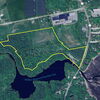Processing Your Payment
Please do not leave this page until complete. This can take a few moments.
- News
-
Editions
-
- Lists
-
Viewpoints
-
Our Events
-
Event Info
- Women's Leadership Forum 2025
- On the Road with Mainebiz in Bethel
- Health Care Forum 2025
- On The Road with Mainebiz in Greenville
- On The Road with Mainebiz in Waterville
- Small Business Forum 2025
- Outstanding Women in Business Reception 2025
- On The Road with Mainebiz in Bath
- 60 Ideas in 60 Minutes Portland 2025
- 40 Under 40 Awards Reception 2025
- On The Road with Mainebiz in Lewiston / Auburn
- 60 Ideas in 60 Minutes Bangor 2025
Award Honorees
- 2025 Business Leaders of the Year
- 2024 Women to Watch Honorees
- 2024 Business Leaders of the Year
- 2023 NextUp: 40 Under 40 Honorees
- 2023 Women to Watch Honorees
- 2023 Business Leaders of the Year
- 2022 NextUp: 40 Under 40 Honorees
- 2022 Women to Watch Honorees
- 2022 Business Leaders of the Year
-
-
Calendar
-
Biz Marketplace
- News
-
Editions
View Digital Editions
Biweekly Issues
- April 21, 2025 Edition
- April 7, 2025
- March 24, 2025
- March 10, 2025
- Feb. 24, 2025
- Feb. 10, 2025
- + More
Special Editions
- Lists
- Viewpoints
-
Our Events
Event Info
- View all Events
- Women's Leadership Forum 2025
- On the Road with Mainebiz in Bethel
- Health Care Forum 2025
- On The Road with Mainebiz in Greenville
- On The Road with Mainebiz in Waterville
- + More
Award Honorees
- 2025 Business Leaders of the Year
- 2024 Women to Watch Honorees
- 2024 Business Leaders of the Year
- 2023 NextUp: 40 Under 40 Honorees
- 2023 Women to Watch Honorees
- 2023 Business Leaders of the Year
- + More
- 2022 NextUp: 40 Under 40 Honorees
- 2022 Women to Watch Honorees
- 2022 Business Leaders of the Year
- Nomination Forms
- Calendar
- Biz Marketplace
Learning curve
Task force tackles education
- Post-secondary opportunities eyed
- Matching skills to jobs a priority
Gov. Paul LePage has created a task force charged with making recommendations on how to expand early college and post-secondary educational opportunities for high school students, a move drawing some criticism and concern.
"The bottom line is that we have many early-college high school opportunities in place, but we don't have any systematic approach to making them available to students," LePage said. "We need to give students some clear options that will encourage them to enter post-secondary education and give them the start they need."
Education Commissioner Steve Bowen will chair the task force, made up of 15 educators and four lawmakers. He said there are already many opportunities across the state for high school students to start their post-secondary education while still in high school, but no coordinated approach to those various programs at local schools."What we have to do is to pull all of the various ideas and programs together and make sure they are connected so that a student has a seamless path they can follow," he said.
Bowen said changes in law or policy are possible, but he does not foresee a proposal calling for major new expenditures. "There is no money, that is not going to happen," he said.
Bowen acknowledged that Gov. LePage's comments about a fifth year of high school or a 13th year of public education have confused many educators across the state."This is about making better what some are already doing and developing models that can work across the state," he said.
Sen. Brian Langley, R-Ellsworth, co-chairman of the education committee and a longtime vocational instructor, said the panel must look broadly at the definition of post-secondary education. "I got a report recently about the thousands of jobs we have going unfilled because people don't have the right skills," he said, "and I look at the tens of thousands of people out of work. We have to do more training that is tailored to the jobs that are out there and not just college or two-year degree programs."
Langley said many skills could be obtained in a yearlong training program following a high school diploma, possibly at the same school building. "He's absolutely right and we have to look at that," Bowen said. "I just paid $75 an hour to have my lawn tractor fixed. Maybe I am in the wrong line of work."
Food stamp popularity grows
- Low wages, unemployment contribute
- Program considered an 'economic stabilizer'
While some indications show Maine's economy slowly recovering from the recession, use of federally funded food stamps continues to rise.
The latest statistics show more than 248,000 Mainers, or nearly 128,000 households, benefiting from the program, up 7.5% from a year ago. The average monthly benefit per person totals $129.17.
"It's really a combination of factors that are causing this increase," said Barbara Van Burgle, director of the Office for Family Independence. "One is that we have a lot of families where a parent is working but they do not make very much and are still eligible for the food supplement programs. That is 45% of the families."
The federal government pays for all of the benefits and half of the cost of administering the program. Any person with income less than 185% of the federal poverty level is eligible for the Supplemental Nutrition Assistance Program, or SNAP, formerly called the food stamp program. The federal poverty level is $10,890 a year for an individual and $22,350 for a family of four. In a poor state like Maine, a lot of families with working parents are eligible for benefits, Van Burgle said.
Another factor in SNAP's rising popularity is the growing number of residents who have been out of work so long they are omitted from the monthly unemployment rate, said Jim Breece, an economist at the University of Maine and a member of the State Revenue Forecasting Committee. "They are called discouraged workers," he said. "They no longer are being counted in the monthly unemployment numbers but they are still there waiting for more jobs to be created so they can go back to work."
Charles Colgan, a University of Southern Maine economist and former state economist, agreed that the stability in the unemployment rate does not reflect turmoil in the job market. "Incomes have really stagnated at where they were at the bottom of the recession," he said. "People are looking for jobs, but there has been little job growth. Overall, the income picture has not improved at all."
Colgan said the SNAP program acts as an economic stabilizer for the state. Last year, more than $356 million in benefits were paid out in Maine, and that is certain to increase in this budget year. All of that cash is immediately spent for food, he said. "It does not help the economy improve," Colgan said. "But it prevents things from getting worse."
Veterans' health care explored
- Shift from Medicaid to VA investigated
- Many vets unaware of federal benefits
State officials are exploring ways to encourage veterans on Medicaid to shift some or all of their health care to the federal Veterans Administration, saving the state money and potentially improving benefits.
"People who are on Medicaid who have military service are eligible for Medicaid, but clearly there are opportunities for individuals to move into the veterans' health benefits programs and there are clearly savings for the Medicaid program," said Department of Health and Human Services Commissioner Mary Mayhew.
Maine has approximately 150,000 veterans, one of the highest per capita rates in the nation. Peter Ogden, director of the state Bureau of Veterans Services, said only about 40,000 of them take advantage of the various Veterans Administration health programs.
Several states are using the federal Public Assistance Reporting Information System, a database set up to help stop Medicaid fraud, to identify recipients who are also veterans and provide them information about VA programs."In Washington state, where it has been used the longest, it has been successful because they have someone on the DHS staff that works with veterans to provide them the information about VA benefits," Ogden said. "We have been trying to figure out how we could fund a position to do that here."
Despite the costs to set up such a system, other states have realized significant savings. Montana saw $900,000 savings in its first year of use, 2008. Washington state estimates that since it first implemented the program in 2003, the state has saved $27 million and 9,500 veterans have been moved from Medicaid to VA programs.
Mayhew said she objected to moving forward and projecting savings in the current budget because she was not confident of the numbers. She said her agency is working with Ogden and his staff to develop a plan and a budget estimate. "We don't want to do anything that would hurt a veteran or in any way affect other benefits they are already receiving," Ogden said.
Mal Leary runs Capitol News Service in Augusta. He can be reached at editorial@mainebiz.biz. Read more of Mal's columns here.










Comments